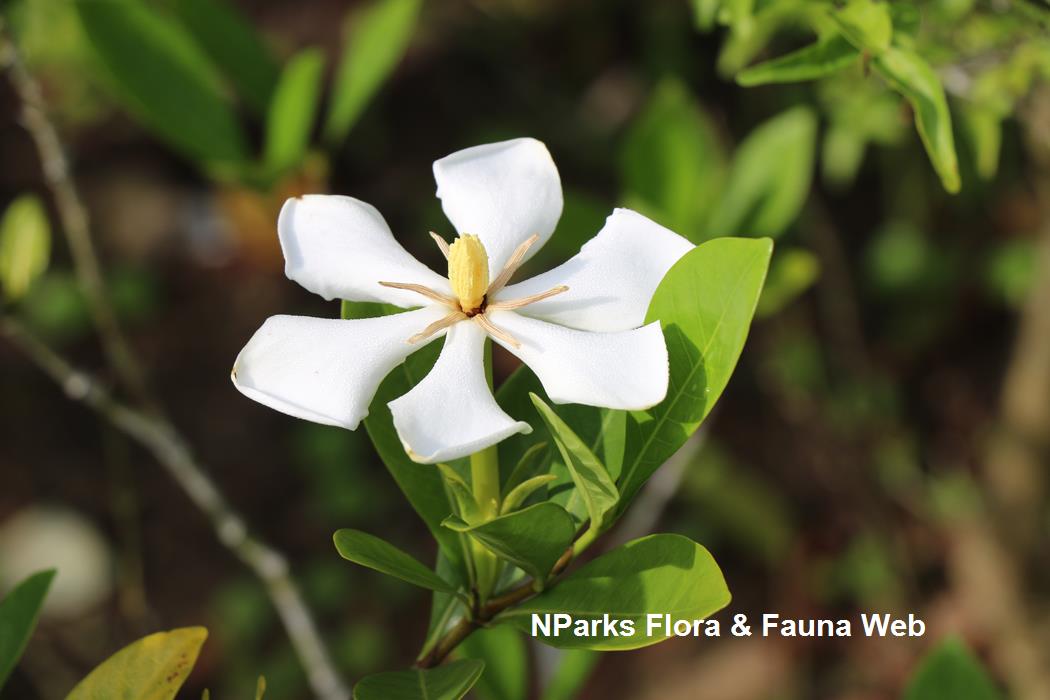
Name
Classifications and Characteristics
| Plant Growth Form | Tree (Small (6m-15m)) |
|---|---|
| Mode of Nutrition | Autotrophic |
Biogeography
| Native Distribution | Thailand |
|---|---|
| Native Habitat | Terrestrial |
| Preferred Climate Zone | Tropical |
Description and Ethnobotany
| Growth Form | Gardenia sootepensis is a tree, growing to 7-10 m tall and often with gelatinous secretions. |
|---|---|
| Foliage | Leaves are thinly leathery (turns papery when dried), oval to elliptical (7-29 × 3-16 cm). The upper surface is smooth to hairy while the underside is densely hairy. Stipules are cap-like (0.5 - 1 cm) and covered in flattened soft hairs. Petiole is 0.6 - 1.2 cm and hairy. |
| Flowers | Flowers are tubular (50 – 70 mm long) and can occurs solitary or in clusters. Each flower have 5 cream white petals which turn yellow as it age. Calyx is hairy. |
| Fruit | Berry is hard, elliptical (2.5 - 5.5 cm long and 1.5 - 3.5 cm wide) with 5 or 6 faint ridges and hairs on the fruit surface. |
Landscaping Features
| Desirable Plant Features | Ornamental Flowers, Fragrant |
|---|---|
| Landscape Uses | Parks & Gardens |
Plant Care and Propagation
| Light Preference | Full Sun |
|---|---|
| Water Preference | Moderate Water |
| Plant Growth Rate | Moderate |
Foliar
| Mature Foliage Colour(s) | Green |
|---|---|
| Mature Foliage Texture(s) | Hairy / Hirsute |
Floral (Angiosperm)
| Flower Colour(s) | Cream / Off-White, Yellow / Golden |
|---|
Fruit, Seed and Spore
| Mature Fruit Texture(s) | Smooth, Hairy / Hirsute |
|---|
Image Repository
Others
| Master ID | 29107 |
|---|---|
| Species ID | 3419 |
| Flora Disclaimer | The information in this website has been compiled from reliable sources, such as reference works on medicinal plants. It is not a substitute for medical advice or treatment and NParks does not purport to provide any medical advice. Readers should always consult his/her physician before using or consuming a plant for medicinal purposes. |









